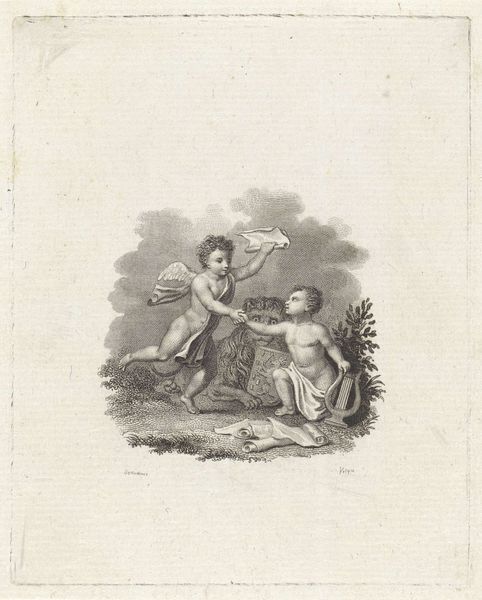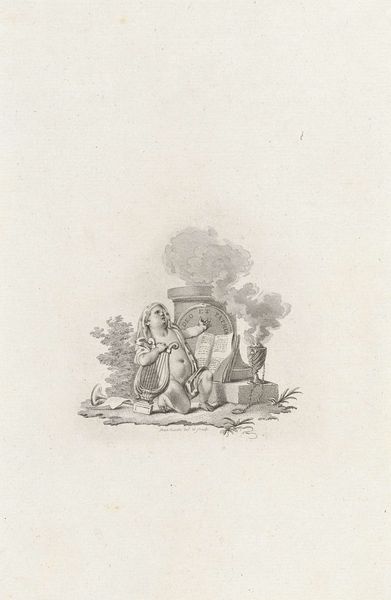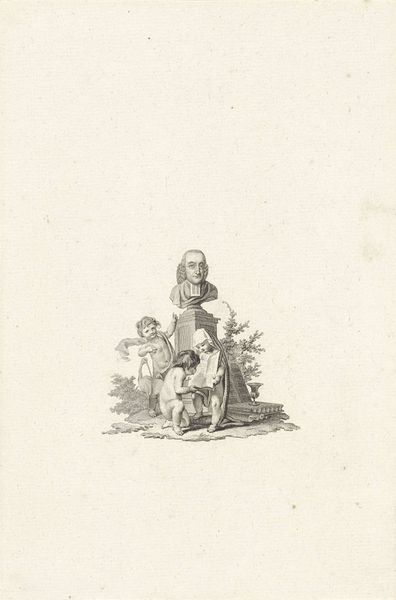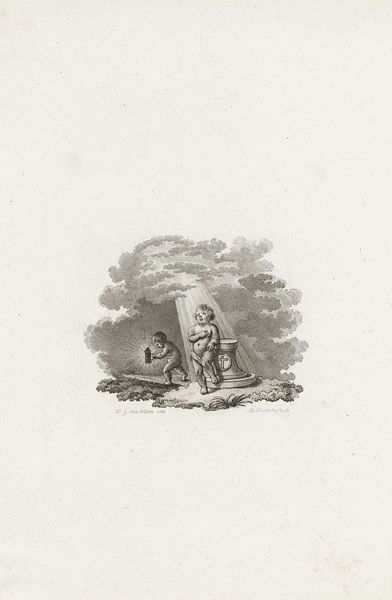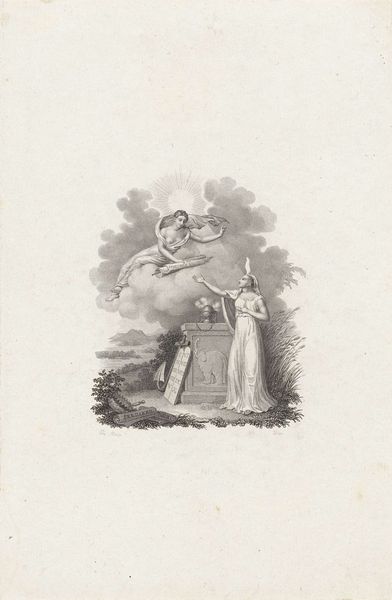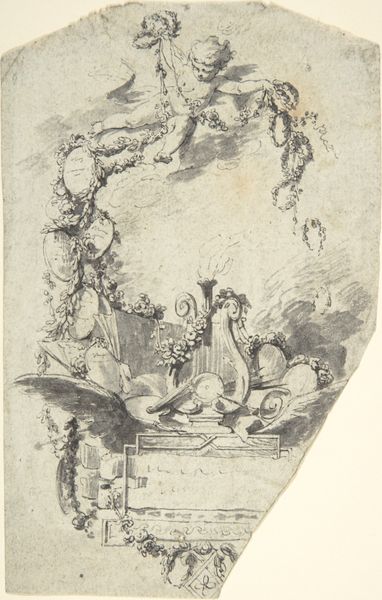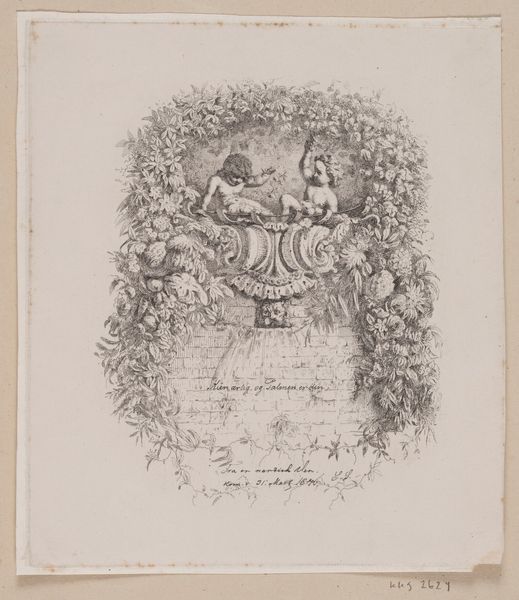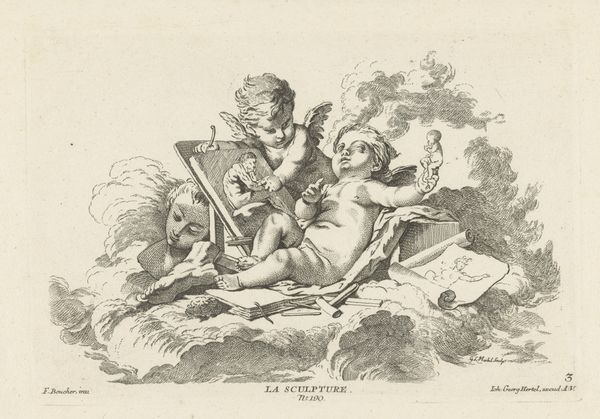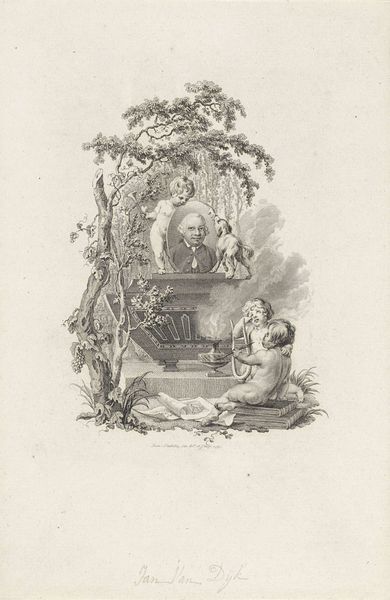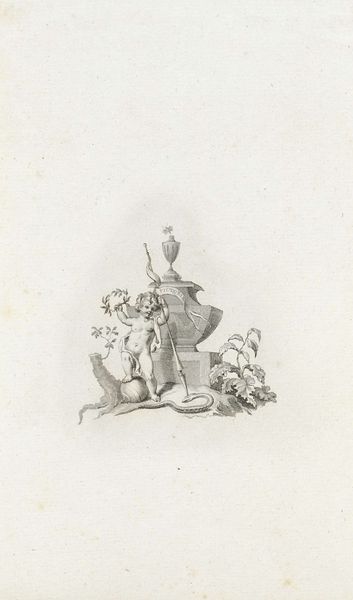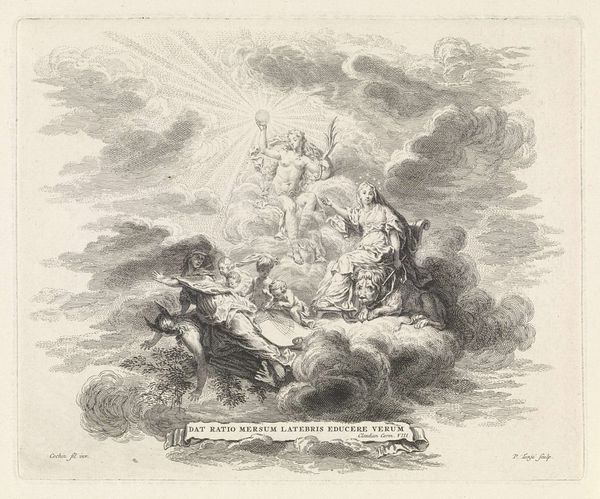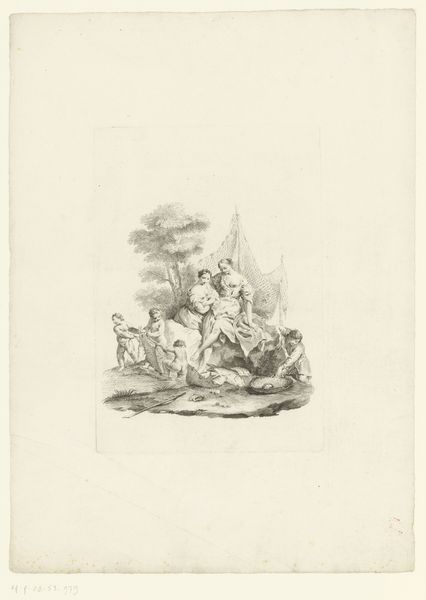
Dimensions: height 78 mm, width 86 mm
Copyright: Rijks Museum: Open Domain
Editor: This print, “Vier putti met de familiewapens van Graafland en Hooft,” was created around 1775 by Reinier Vinkeles and it is currently held at the Rijksmuseum. I’m immediately struck by the allegorical scene: the cherubic figures, or putti, clustered around what appear to be family crests… it feels so ornate and delicate. How would you interpret the symbolism within this piece? Curator: Indeed, this image teems with symbolism typical of the Baroque period. The putti themselves represent innocence, divine love, and act as messengers. They frame the two escutcheons: The Graafland arms, featuring perhaps clouds alluding to heavenly origins; and the Hooft arms showing a classical head suggesting intellect and sophistication. This joining visually signifies union between two families of social standing. The garlands of flowers represent honor. Do you notice any particular details within the crests themselves? Editor: The clouds on the left crest seem unusual; could they signify something specific beyond just a link to heaven? Curator: That is an excellent observation. Consider clouds as symbols. Often, clouds conceal as much as they reveal. Perhaps, they represent aspirations, or even obscured histories? They invite questions rather than provide answers about the Graafland family’s past. Think of these images as containers of cultural memory. What feelings are conjured as you see the two family arms together? Editor: Now that you mention it, a sense of legacy definitely comes across. These families are proudly displaying who they are, who they were, and most likely, who they aspire to be. Thank you, I appreciate learning that what seems like decorative art can hold deeper meanings. Curator: Exactly. Visual symbols operate on conscious and subconscious levels. What we see tells a powerful story and reflects enduring aspects of culture. And symbols morph across time! This engraving speaks of social status in 1775 but viewed today sparks reflection about class, familial identity, and representation.
Comments
No comments
Be the first to comment and join the conversation on the ultimate creative platform.
